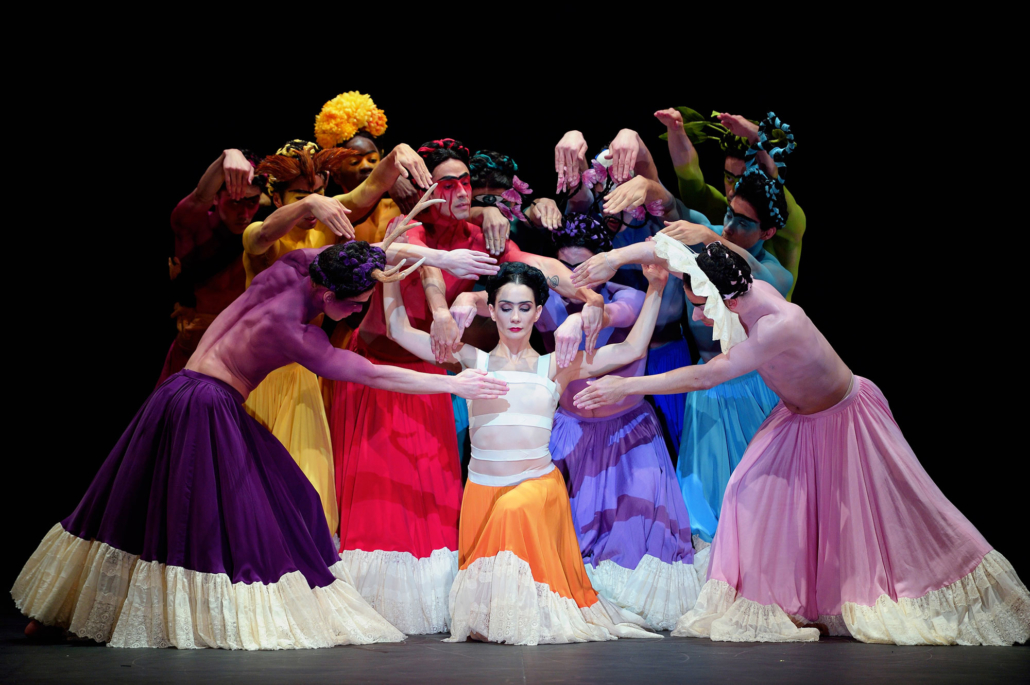Meet the Choreographer: Annabelle Lopez Ochoa
"The Devil Ties My Tongue" by Amy Seiwert performed for the SKETCH Series, 2013. Photo by David DeSilva. Courtesy of Amy Seiwert's Imagery
April 30th: South Arts: Professional Development & Artistic Planning Grants, April 30th: South Arts: Express Grants, May 6th: Doris Duke Foundation Grant, May 7th: South Arts Individual Artist Career Opportunity Grant, May 27th: Dancemakers Residency, June 1st: Miami DanceMakers
×
"The Devil Ties My Tongue" by Amy Seiwert performed for the SKETCH Series, 2013. Photo by David DeSilva. Courtesy of Amy Seiwert's Imagery
DDP Founder and President Liza Yntema had the pleasure of interviewing choreographer Annabelle Lopez Ochoa for DDP’s latest Meet the Artist. Read the article below and learn more about Annabelle Lopez Ochoa on her website, here.
Liza Yntema (LY): Can you tell me about your background, both as a dancer and as a choreographer?
Annabelle Lopez Ochoa (ALO): I trained in the classical Vaganova technique at the Royal Ballet of Flanders for seven years, along with some Martha Graham technique, jazz, and flamenco. Then I danced in four different companies in Germany and The Netherlands for 12 years, going from a Dance Theatre based group in Germany, to a modern jazz troupe in Holland, and ending at the Scapino Ballet, a contemporary dance company in Rotterdam, where I choreographed my first pieces during the annual choreographers’ workshop. The company’s artistic director, Ed Wubbe, noticed my talent and subsequently commissioned a new work of mine for the company. The same happened after I made a short duet during the choreographers’ workshop at the Dutch National Ballet. After seeing the work, Ted Brandsen commissioned me to create a new work for the company – this would be my first ballet piece with the dancers en pointe.
LY: What was your first piece?
ALO: I started choreographing at the age of 11, so I’m not quite sure what I would count as my first piece. I suppose I could choose “Symbiosis,” my first creation for the 1997 choreographers’ workshop at Scapino Ballet. It was a short female duet based on a French rhyme that I had written during my daily commute on the train. The piece became very popular and was performed for a few years by the Codarts students.

LY: What obstacles have you had to overcome?
ALO: Obstacles are there for you to bounce back from average work you make or bad reviews you get. Finding solutions to problem tickles my creativity. I have had lots of average work, and I still get bad reviews! I keep learning and keep growing as an artist.
It just doesn’t take as long anymore to bounce back from a bad review. Each time I am reminded that I am lucky to be a choreographer instead of a dance reviewer in this life.
LY: Tell us about your 2019-2020 Schedule?
ALO: My 2019-20 season is jam-packed with 11 premieres and nine revivals, comprised of three full-length ballets:
LY: Do you have any future commissions you can discuss?
ALO: The future doesn’t exist and has no certainty, so I rather not discuss it. What I am certain about is that the premiere of The Little Prince is approaching soon [DDP note: at the time of interview], and it has been a beautiful journey to work with BalletX and dig deep into the symbolism of Antoine de Saint-Exupery’s wonderful story.
LY: What motivates you? A piece of music, a story?
ALO: The concept usually comes first, then the music.
LY: Tell us about your relationship with BalletX: Christine Cox has supported so many emerging artists.
ALO: Christine invited me in 2008 to create a work for an all-female choreographers’ evening. I think I might have been the first overseas choreographer at the time. She is fearless- she didn’t let the whole visa application process phase her.
Since then, Christine has invited me three more times. BalletX has really grown as an art institution in Philadelphia, and I have grown and matured as a choreographer. The Little Prince will be my fourth piece for the company. I think that Christine focuses on the potential of artists and hence invites them back. I am forever grateful to her.

LY: What might change the culture of ballet to allow more talented women to emerge?
ALO: Parents should allow their daughter(s) to behave in a more “masculine” way. Why do we make a difference between games boys versus girls should play? Young girls, with their leadership instinct, should be allowed to pick their teams in gym class and be captains of a soccer team. We need to stop talking to young girls about the fact that marriage and becoming a mother is the highest form of success and happiness one can achieve. Our happiness should not depend on others.
In ballet school you are taught that if you get chosen for the main character, the princess or the ingenue who is cheated on by a prince, you made it. Seriously?
We should make the other roles just as important. Who are the villagers in Giselle? What is the backstory of the corps of swans? Please, let’s give the corps de ballet more identity instead of screaming at them to stand in line on the right count. Let’s inspire these young women.
That being said, you can’t impose choreography on a woman for the sake of creating more female choreographers. Unlike choreographers, some artists simply love being the vehicle of someone’s creation- and they’re great at it. However, if there is a female choreographer with potential, please don’t ditch them after their first work just because it wasn’t as amazing as you had hoped. Masterworks come much later in one’s life and career, and that is the difference between young male and female choreographers. Male choreographers are given a second opportunity much faster than their female counterparts. Hence, they grow faster at their craft.

LY: Do you have a dream ballet or an idea you carry around with you?
ALO: If I had, I wouldn’t tell it.
LY: So, what is home right now? You are on the road so much.
ALO: I’m a Buddhist, I don’t give much importance to material things. Home is the place where happiness is. It can be anywhere. But my fiscal address is in Amsterdam.
LY: Do you have a routine for preparing a piece? Thinking it through?
ALO: I think a lot, and I’m aware I should be writing more down. That being said, when I work on a narrative ballet, I usually start with the script six months in advance, and I update it as I rehearse. When it is an abstract ballet, I hardly write anything down (except my search for a title can be found in my notebooks). I find that creativity happens mostly in the studio with the dancers, but can also happen on the street, in the shower, at an exhibition, or while observing any human behavior.
LY: How about what restores you? Spending time with family? Meditation?
ALO: I try to disconnect once a year: turning off the internet, watching and listening to the sound of the waves, and reading books.
I always meditate for a hot second right before rehearsal starts – that’s why in that moment I can never hold a conversation.
LY: Are you still dancing yourself?
ALO: I don’t dance anymore, except every now and then I’ll dance to salsa or 80’s music. Dancing is good for the soul!
LY: Any thoughts about how Dance Data Project can better serve women leaders in ballet and connect you with funders? the press?
ALO: Give women visibility. Have them be interviewed for magazines like Vogue, etc. to reach to a larger spectrum of young women. Make documentaries. Anything that receives exposure becomes a normalcy, and hopefully in 20 years we won’t be having this gender gap discussion anymore, and we will simply be talking about artists and leaders.

Find out more about The Little Prince here.
Reach out to us to learn more about our mission.
"The Devil Ties My Tongue" by Amy Seiwert performed for the SKETCH Series, 2013. Photo by David DeSilva. Courtesy of Amy Seiwert's Imagery

 New York Times: The Workplace Still Isn’t Equal for Women. Here’s Some Advice...
New York Times: The Workplace Still Isn’t Equal for Women. Here’s Some Advice...
Leave a Reply
Want to join the discussion?Feel free to contribute!